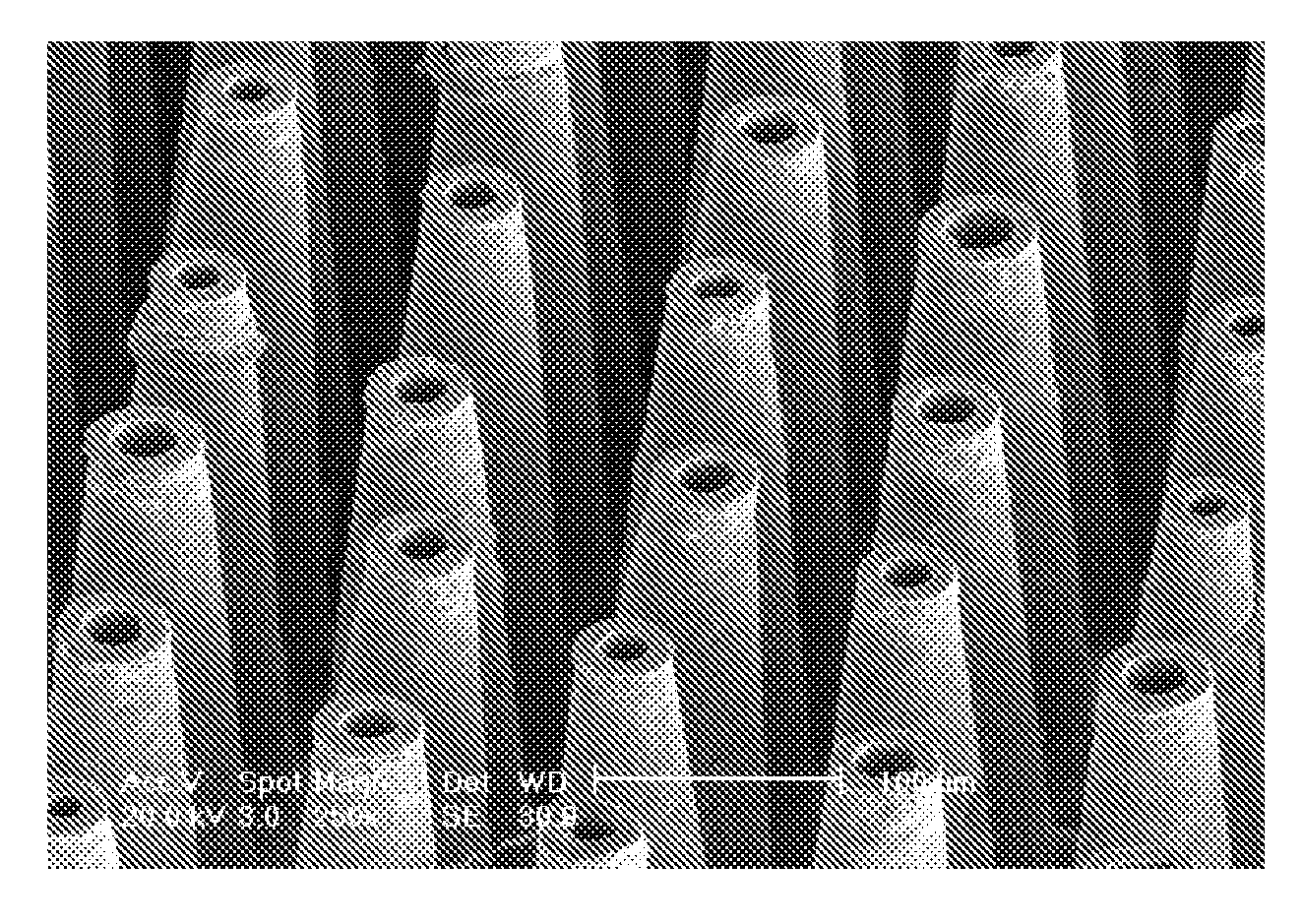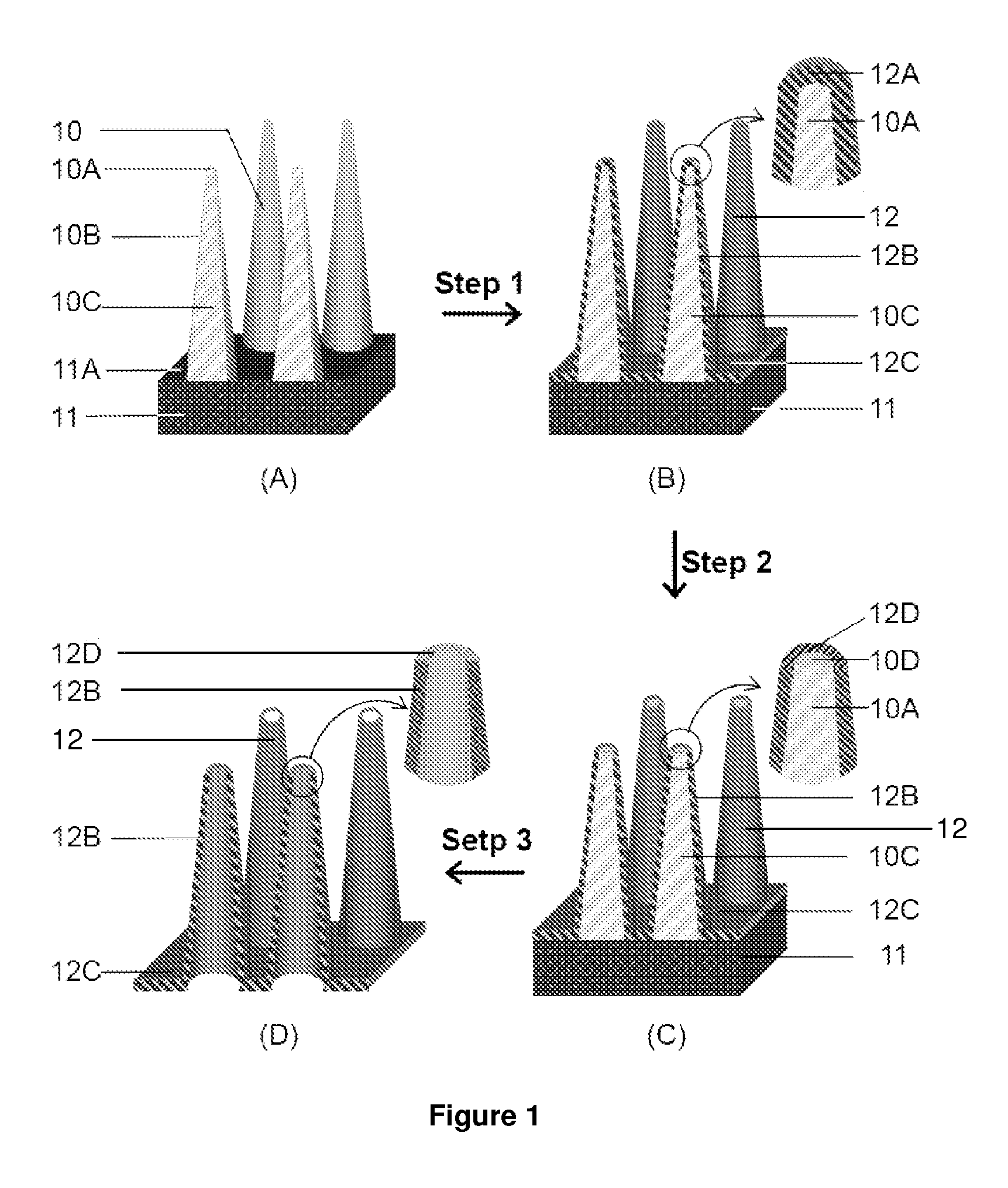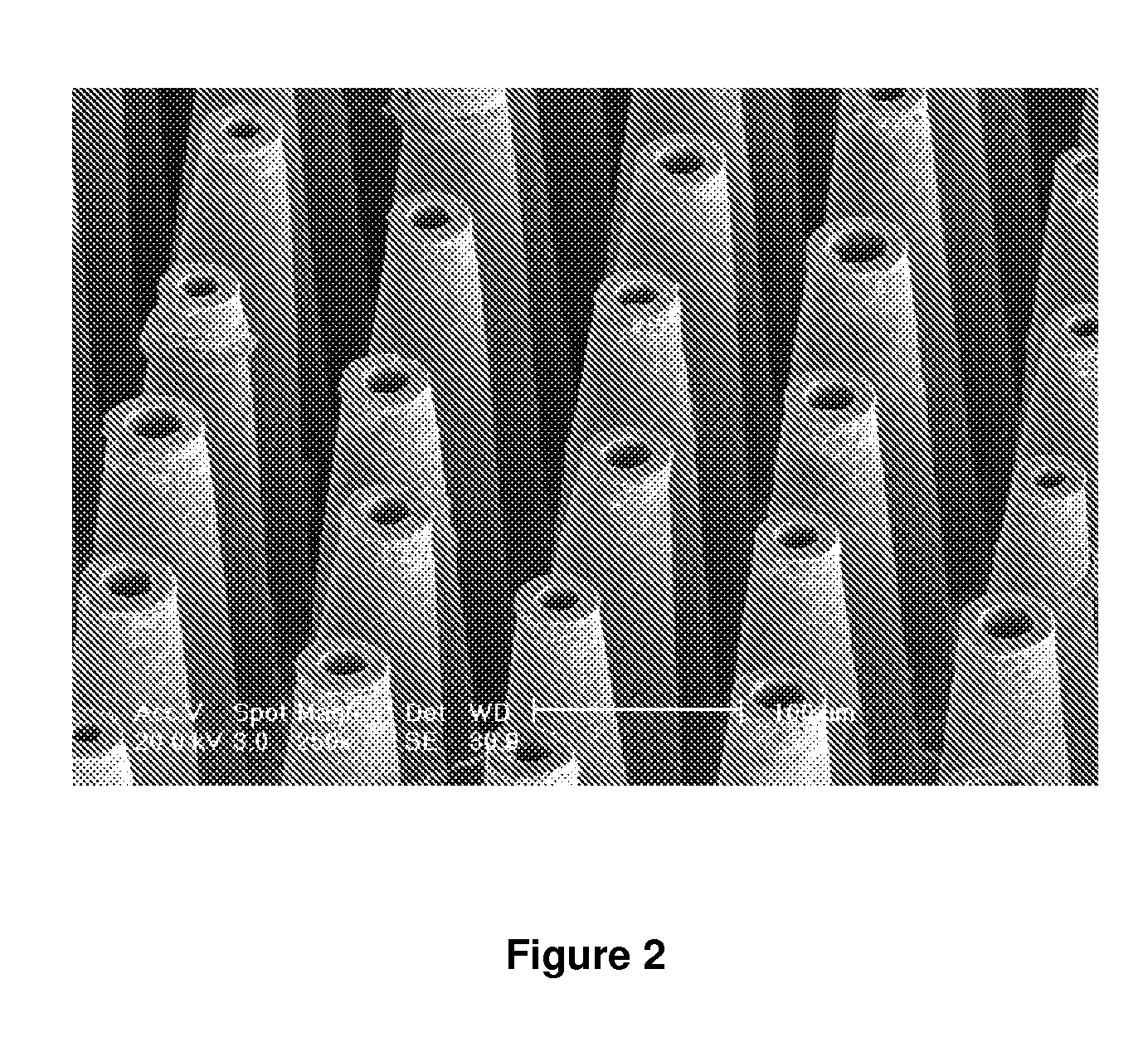Fabrication method for hollow microneedles for drug delivery
a technology of hollow microneedles and fabrication methods, which is applied in the field of hypodermic needles, can solve the problems of high cost and low throughput of existing fabrication methods, ineffective fabrication of hollow microneedle arrays using current methods, and inability to achieve commercial mass production of hollow microneedle arrays, etc., and achieves low investment on both fabrication equipment and materials. , the quality of the resulted needles is very high
- Summary
- Abstract
- Description
- Claims
- Application Information
AI Technical Summary
Benefits of technology
Problems solved by technology
Method used
Image
Examples
example 1
[0022]A layer of copper with thickness of about 50 μm is electroplated on the surface of poly(methyl methacrylate) (PMMA) microneedles array of 500 μm in diameter for a single needle, then the tips of the needles are removed by about 100 μm in length by cutting. Finally, the PMMA is removed by immersing in trichloromethane for about 2 hours, which results in a copper hollow microneedles array.
example 2
[0023]A layer of gold with thickness of about 20 nm is sputtered on the surface of silica microneedles array of 3 μm in diameter for a single needle, then the tips of the needles are removed by about 50 nm in length by etching. Finally, the silica is removed by immersing in hydrofluoric acid for about 60 min, which results in a gold hollow microneedles array.
example 3
[0024]A layer of polystyrene with thickness of about 500 μm are directly coated on the surface of iron microneedles array of 2 mm in diameter for a single needle, then the tips of the needles are removed by about 1 mm in length by cutting. Finally, the iron is removed by immersing in hydrochloric acid for about 1 min, which results in a polystyrene hollow microneedles array.
PUM
 Login to View More
Login to View More Abstract
Description
Claims
Application Information
 Login to View More
Login to View More - R&D
- Intellectual Property
- Life Sciences
- Materials
- Tech Scout
- Unparalleled Data Quality
- Higher Quality Content
- 60% Fewer Hallucinations
Browse by: Latest US Patents, China's latest patents, Technical Efficacy Thesaurus, Application Domain, Technology Topic, Popular Technical Reports.
© 2025 PatSnap. All rights reserved.Legal|Privacy policy|Modern Slavery Act Transparency Statement|Sitemap|About US| Contact US: help@patsnap.com



